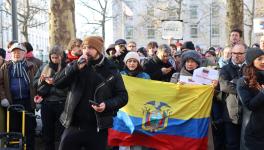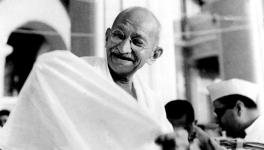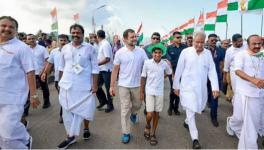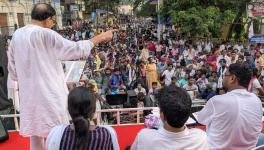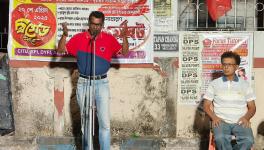91 Years Ago, Chittagong Armoury Raid Shook the British Empire
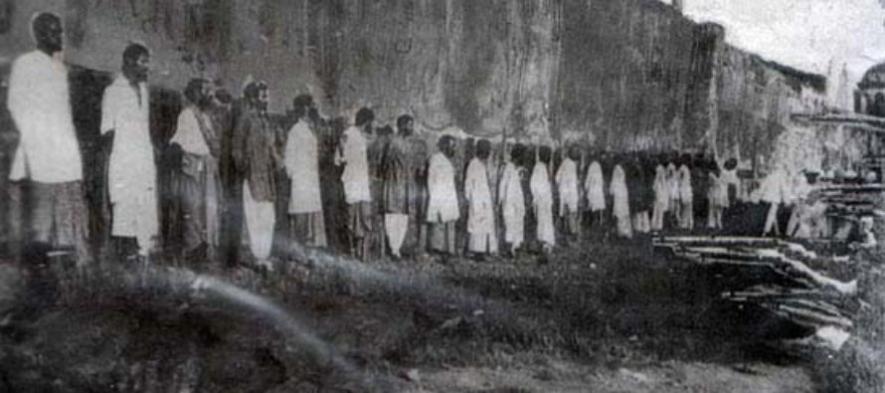
One of the most daredevil acts organised in the history of the Indian revolutionary movement was the Chittagong armoury raid. On 18 April 1930, a band of 63 youngsters, most of them teenagers led by Surjya Sen, also known as Surya Sen and Master-da, raided the police and auxiliary forces armoury in the Chittagong district, undivided Bengal, and liberated it from British control, unfurling the Indian flag.
This raid was carried out by revolutionaries of the Chittagong branch of the Indian Republican Army (IRA). The IRA was formed in response to the passivity of two Bengal-based revolutionary groups, the Anushilan Samiti and Jugantar, after the Non-Cooperation Movement. Both these groups supported different camps of the Indian National Congress in the early 1920s. The Non-Cooperation Movement unleashed new revolutionary energy among the youth of Bengal, but its failure led to deep pessimism, following inaction. It led to the formation of several new groups that the British called the New Violence Party. The IRA led by Surjya Sen was one among many groups such as the Sri Sangh, Bengal Volunteers, and Revolting Group.
At 10 PM on 18 April 1930, IRA revolutionaries divided themselves into five groups and attacked the Telegram Office, the Police Lines, and the AFI armoury and simultaneously tempered the railway lines at two places.
While the raid was on, two pamphlets were distributed all over the town, one of which read that they were “breaking the laws of treason” in line with Gandhi’s call for the Civil Disobedience Movement and declared the independence of Chittagong. The other pamphlet called upon the youth to join the uprising.
The raid caught the British by surprise and paralysed the administration as they retreated from the district, only to return after a few days, all guns blazing. After four days, the reinforced British troops attacked the Indian revolutionaries who had, in the meanwhile, retreated to the nearby Jalalabad Hills. An intense battle ensued between the Indian revolutionaries and the British troops armed with heavy weapons and machine guns. Twelve revolutionaries and eighty-two British troops died on the first day of the counter-offensive, and more as the revolutionaries retreated from the hills. Following the British counter-offensive, the revolutionaries decided to engage in a guerrilla struggle that lasted four years.
Despite a massive man-hunt, a charismatic Sen avoided capture for nearly three years by constantly moving from place to place in disguise. He became immensely popular in the region and received massive support from the local population, mostly poor Muslim peasants. Sen avoided arrest until February 1933, when a relative betrayed him to the police. He was hanged on 12 January 1934 along with Tarkeswar Dastidar.
Though the Chittagong revolutionaries failed in their immediate objective, it was a heroic failure that galvanised plenty of youngsters.
The Chittagong Branch of the Indian Republican Army was unique compared with other revolutionary groups active in the Bengal Presidency in the thirties. First, it had many women members who were directly involved in armed action. Previously, women in the revolutionary movement mainly carried messages or undertook surveillance. The Chittagong IRA broke this pattern and wrote a new chapter in the history of the Indian revolutionary movement. A British intelligence report noted that the message of the Chittagong heroes reached even the farthest corners, stirred up womenfolk and young girls, “who from this time onwards are found assisting the ‘revolutionaries’ as house-keepers, messengers, custodians of arms and sometimes as comrades”.
The second important development was regarding religion. Previously, Bengal-based revolutionary groups like the Anushilan Samiti and Jugantar, though secular in their political objectives, operated within a religious framework. The Chittagong branch of the IRA moved beyond this frame. Ganesh Ghosh, one of the leaders of the Chittagong uprising, remarked on this development: “It had been the practice of earlier revolutionary leaders to emphasise the performances of certain Hindu religious rites at the time of initiating their recruits. Such practices kept the Muslims away from the revolutionary movement in most of the districts. But the Chittagong group shunned all religious practices and succeeded in drawing a number of Muslim young men into their fold.”
The most meaningful contribution of the Chittagong revolutionaries was the development of the communist movement in Bengal. Several revolutionaries were arrested in the Chittagong armoury raid and sentenced to life imprisonment in the Cellular Jail on the Andaman Islands. There they studied Marxism rather voraciously, seeking an alternative to their tactics which had not worked. Convinced by the scientific approach of Marxism, IRA revolutionaries, and their HSRA, Anushilan, and Jugantar comrades, formed the Communist Consolidation in the Cellular Jail on 26 April 1935. This group established an informal ‘Marxist University’ in the jail and embarked on a historic self-education programme on Marxism-Leninism. After they were released from jail a prominent section joined the Communist Party of India (CPI).
From the Chittagong group emerged stalwarts of the Indian communist movement including Kalpana Datta, Ganesh Ghosh, Ananta Lal Singh, Ambika Chakraborty, Subodh Roy, Ananda Gupta, and Suhasini Ganguly who played an important role in establishing the CPI and later in the formation of the Communist Party of India-Marxist (CPI-M). The group also probably gave India its first woman martyr after the 1857 revolt. Pritilata Waddedar, who led the attack on Pahartali European Club in 1932 which had a board outside it reading “Dogs and Indians not allowed”, chose to swallow cyanide instead of capture by the British.
As Bengal is experiencing one of the most vitriolic, vicious, and communal election campaigns ever, it is important to revisit its past and remember the revolutionaries who bridged the religious divide, and later joined the communist movement to free India from the yoke of British imperialism, feudalism, and capitalism.
Prabal Saran Agarwal and Harshvardhan are Ph.D. scholars at JNU. The views are personal
Get the latest reports & analysis with people's perspective on Protests, movements & deep analytical videos, discussions of the current affairs in your Telegram app. Subscribe to NewsClick's Telegram channel & get Real-Time updates on stories, as they get published on our website.









